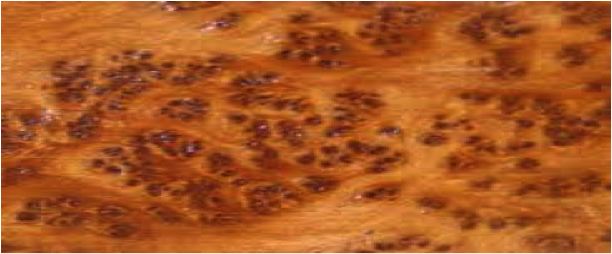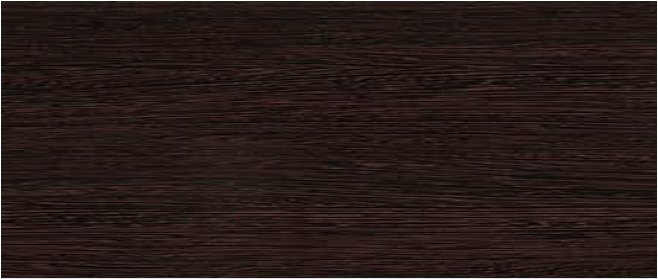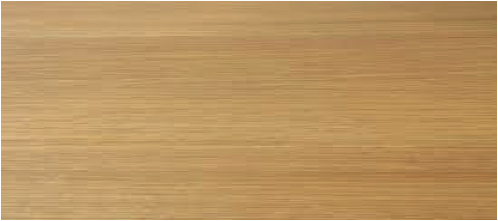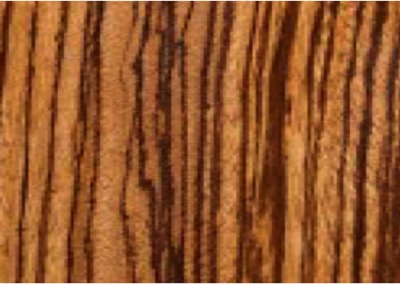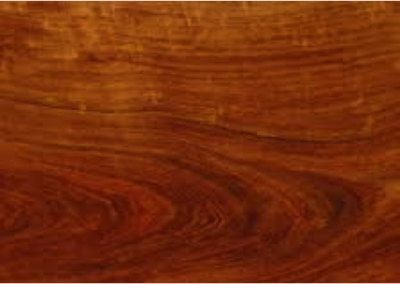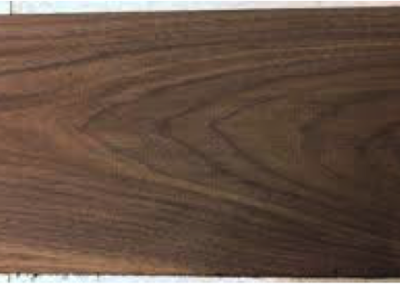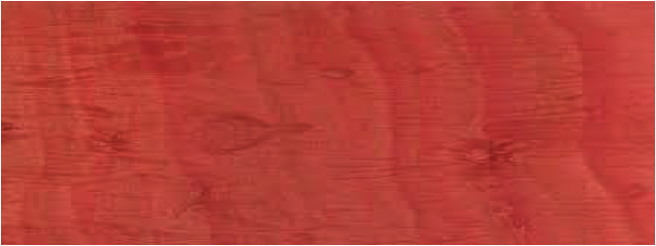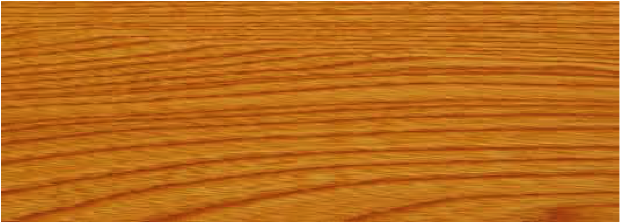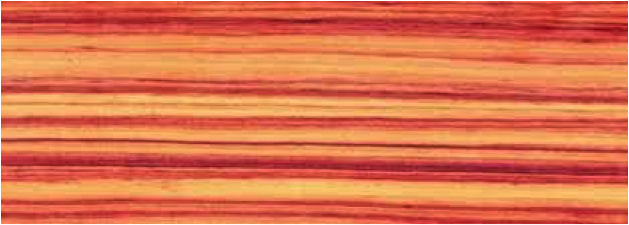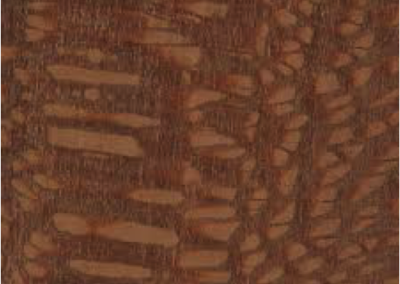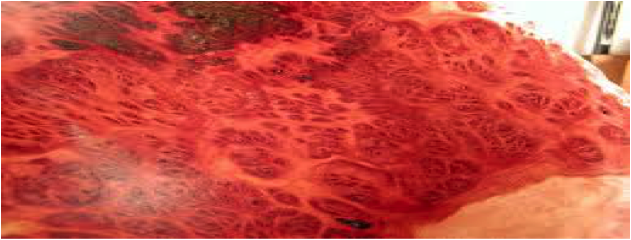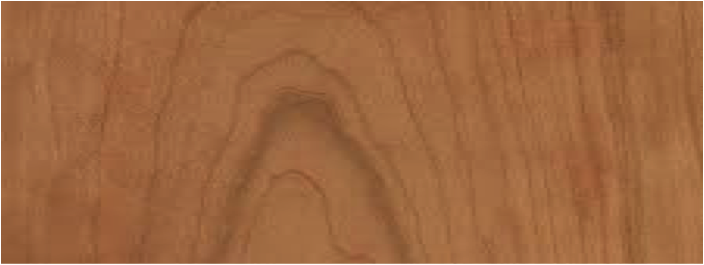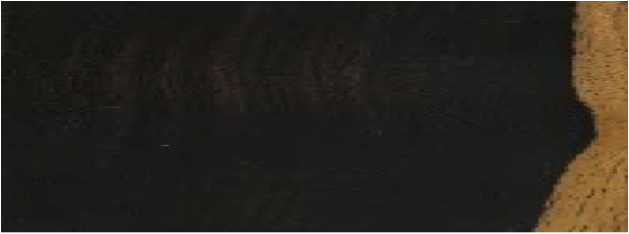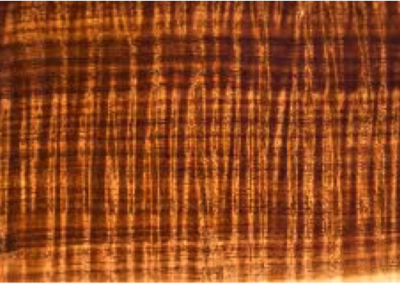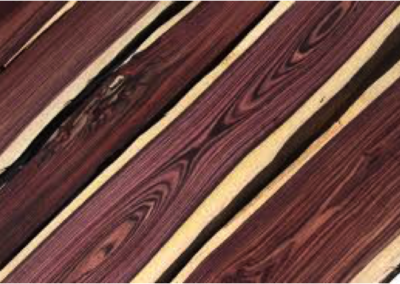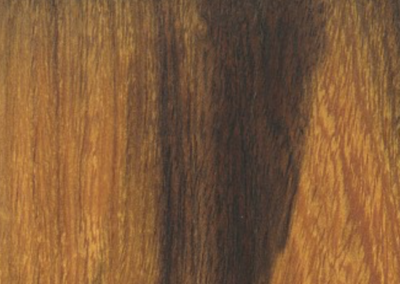Handle Material (Wood Description)

As you begin to browse through this section, be aware that the material you select for the handle is responsible for much of the aura or style of the knife. Curiously, the handle is the first and third place a person’s eyes take in upon viewing a knife like this for the first time. Their eyes are immediately drawn to the beauty and any unusual aspect of the handle material. Then, they look at the blade, turn it over, touch it…but their gaze always returns to the handle.
Yes, one can possess function and beauty in a single knife. However, it is that delicate combination of the material selected and the knife maker’s craftsmanship that separates a knife that works from a work of art.
Browsing below, you will see many choice woods in “straight-grain”. However, a specific piece of wood is considered “figured” when there are designs noticeably present in its grain. There are three terms commonly used to describe these figures. These occur in various types, but are somewhat rare exceptions to the ordinary wood. For example, while the wood from a walnut tree is indeed expensive, it’s price pales in comparison to a single piece of walnut burl.
To help in your decision making process, the “figured” types are explained below. As you move on to the photographs of the wood available for your one of a kind knife’s Handle Material, you will have a unique understanding of the wood itself.
Spalting
Spalting is any form of wood coloration caused by fungi. Most often found in dying trees, spalting also occurs in healthy, thriving trees that might have at one time experienced stress of some sort. However it happens, the unique coloration and patterns of spalted wood are highly prized and sought after by woodworkers all over the world.
Described most often by zone lines—spalting usually presents as dark dotting or winding lines…thin streaks of red, brown, black, or white. Zone lines do not occur due to any specific type of fungus, but are instead visible interaction zones in which different fungi have erected barriers to protect their “territory”. Zone lines do not damage the wood, however, if not harvested in time, the fungi responsible for creating zone lines often continue their work until the tree exhibits full decay.
One more interesting note about spalting… harvesting a tree “in time” to take advantage of the high price commanded by spalted wood is always an accident. The spalted wood grain cannot be seen or predicted from outside the tree.
Burl
Burls yield a very peculiar and highly figured wood. That outward growth on a tree hides a treasure inside—wood grain that has been redirected into sweeps and swirls. Burled wood can be extremely hard to “work” because its grain is twisted and interlocked, but this wild patterning also causes the wood to be dense, resistant to splitting, and of course, beautiful to polish.
Prized for its beauty and rarity, it is much sought after by furniture makers, artists, and sculptors. Burls are so highly valued, they are most often sliced into thin veneers for inlay in fine automobiles or musical instruments. In addition, some of the most expensive shotguns in the world—with prices well into six figures—cost so much because of the burled walnut stock. It has been said that man makes steel and he can do it in a day, but only God can decide to design a single burl in a specific tree—and when He does, years go into the effort.
Curl
Curly figure in wood is an amazing look and it is not completely clear what causes the phenomenon. Seen typically as a wavy pattern in the wood, the “curl” moves from light to dark to light again, giving the wood a three dimensional appearance.
Curling occurs in many different types of trees, most commonly Maple. Many consider Koa wood from Hawaii among the most beautiful (and rare) of all curled varieties. Curly wood has traditionally been used for instruments, specifically the backs and sides of violins.
The price of curly wood varies greatly, depending upon the tightness of the curl and the intensity or depth of the pattern.
Below, I have listed and described specific types of wood appropriate for the knife you are imagining.
These are selections that—while accessed from different locations around the world—are usually available in a reasonable amount of time.
Have fun comparing the choices!
Thuya Burl
Thuya burl is typically found in the Atlas Mountain Region of northern Africa. This durable wood is most often seen with a reddish-brown hue, sprinkled with small, dark brown or even black knots and swirls. Since this is a burl, there are never large quantities of it available. It is among our favorites and is absolutely beautiful on a finished knife handle!
Wenge
Wenge comes from a flowering tree, the wood is black with golden streaks running through it. Extremely heavy stuff, Wenge is used most often in the music industry to make guitars and drums. From central Africa, Wenge is dark, dense, and durable.
White Oak
White Oaks are typically large, very tall trees that routinely grow to a very old age. Some are reported to have lived more than 450 years. The majority of White Oak is used for larger scale projects. The wood is usually a creamy to pale white color and is widely used for wine barrels because of its resistance to water and rot. One of the more interesting facts about White Oak is that most of the wood in the USS Constitution is White Oak. Occasionally, when parts of the ship need to be replaced, the lumber comes from a special grove of White Oak owned by the United States Navy. Those trees are known as Constitution Grove.
Zebrawood
Zebrawood was first recorded in the British Customs returns for 1773, when 180 pieces were imported from the Mosquito Coast British colony, now known as Honduras and Nicaragua. The wood is a light brown or cream color with dark blackish brown streaks resembling a zebra’s stripes. Depending on the individual piece, stripes can be either chaotic and wavy or somewhat uniform. Zebrawood is also sometimes seen in stocks of expensive shotguns or rifles and is also used in higher end automobiles such as Cadillacs and Mercedes-Benz.
Yellow Box Burl
Yellow Box Burls are harvested in southeastern Australia from medium to tall trees in the Eucalyptus family. Lumber is harvested and used for outdoor projects such as fence posts and bridge parts. It is brown in color and very heavy, dense, and rot resistant. While Yellow Box lumber isn’t popular for woodworking, the rare burls are prized for their unique figure and color.
Mesquite
Mesquite trees currently cover about 100 million acres in the southwestern states of America and in Mexico. Over 50 million of those acres are in Texas. The mesquite tree’s root system can grow more than 100 feet down in search of water, making it a hardy survivor in harsh climates. Long before the first Anglo settlers came to Texas, Native Americans used the wood to make arrows and bows for hunting. Today, many people associate mesquite with barbecue, but it has numerous other uses, such as flooring and staircases where it’s ideal due to its durability. It has also become a popular medium for artistic carvings due to its color and deep shadings.
Walnut
Walnut, which makes up less than 1% of the commercially available hardwoods, grows throughout the eastern United States. Its sapwood is creamy white and its heartwood ranges from light to chocolate brown. Walnut is popular in high-end furniture and a preferred species for architectural millwork. It is also used for cabinetry, gunstocks and turnings.
Spalted Pecan
From yesterday’s Southern groves to the modern Chinese marketplace, the Pecan tree has claimed its place as a valuable commodity. The pecan was important for Native Americans—to whom an average harvest carried as much food value as the bison. After centuries of harvesting in the wild, the “improvement” process began, and it took less than a hundred years for the pecan to be fully domesticated. Today, however, the most expensive part of a pecan tree might just be a spalted limb.
Red Oak
Red Oaks are the most important oaks in North American timber production. Some other types of oak are even cut and marketed as red oak. Red Oak is used for railroad ties, furniture, fence posts, and flooring. It has a similar appearance to White Oak although Red Oak is much more open-grained with a more flowing nature to its pattern.
Purple Heart
Purple heart is an extremely dense, water resistant wood named for its vibrant color. It is ranked one of the top five hardest (and least flexible) woods in the world. The Purple Heart species ranges throughout South America. Curious Fact: A resin is sometimes emitted from the wood that can damage the machinery being used to shape it!
Pink Ivory
African Pink Ivory is still considered sacred wood by Zulu chiefs in Southern Africa and has long been treasured by kings. At one time, the wood was thought to be more sought after than diamonds. It takes hundreds of years to reach a size suitable to make so much as a bowl. African Pink Ivory has a very fine grain and takes a high polish. It is very hard and extremely heavy, with the ability to display fine details.
Osage Orange
Your grandparents probably referred to it as a Horse Apple Tree. On farms in the Deep South, the wood was famous for being able to dull the sharpest saw. It is just that tough! The heavy, close-grained yellow-orange wood of the Osage Orange is beautiful. It is also dense enough that riverboat captains in the 1800’s used sections of its trunk as anchors. It is prized for tool handles and other applications requiring a strong, stable wood that withstands rot. Although its wood is commonly knotty and twisted, straight-grained Osage Orange timber makes excellent bows for archers and is among the strongest “bright wood” available for a knife handle.
Tulipwood
Tulipwood is a stunningly beautiful hardwood that is always in short supply. The tree itself is only found in a narrow geographical area. From Brazil and often very expensive, Tulipwood is seldom available as lumber. Because of its rarity, Tulipwood is generally reserved for very small specialty items or accent pieces. It is considered a true Rosewood and is highly sought after for veneers or inlay.
Maple
The Maple is a traditional symbol of strength and endurance and has long been the national tree of Canada. There are 10 species naturally growing North America and each yields hard, blond colored wood sporting magnificent grain patterns.
Mahogany
Mahogany has a reddish-brown color. This wood is highly prized for its use in fine furniture and flooring. It is also used for instruments. Mahogany, once thought to be a type of cedar, has been traded worldwide for centuries. In the 17th century, Europeans observed Indians using the trees to make canoes. Even in 1907, mahogany imported into Europe totaled 159,830 tons. Mahogany is great for knife handles not only because it is a beautiful wood, but because it has a vast history as well.
Leopardwood
Growing up to 150 feet with a trunk diameter of up to 4 feet, the Leopardwood tree grows in Latin America and its timber is very scarce. Its pinkish to medium brown wood is typically used for inlays, fine furniture, and turnings. Occasionally referred to as Lacewood, the grain has a lustrous finish. Leopardwood is perfectly suited as handle material for any style knife.
Cypress
Cypress are typically found in swamps and beside the ponds and lakes of the Southeastern United States. These flood tolerant trees are especially prized for their wood which contains cypressene, a natural preservative making Cypress extremely resistant to termites or decay. The bark of these trees is often used for mulch, and by squirrels to make nests. The wood is a gorgeous pale yellow with streaks of creamy white.
Coolibah Burl
The Coolibah is a rare Australian tree that grows along river banks in areas that flood easily. Because of its small stature and short supply, lumber is generally not available from Coolibah trees. Actually, when this type wood is seen at all, it is almost always in burled form. The burled wood produces a brownish pink to dark red color, often with swirling dots throughout the piece. Due to its density, it is highly resistant to nicks and abrasions and is one of the most highly regarded woods for knife making.
Cherry
Cherry has long been considered one of the finest North American hardwoods. Traditionally used in fine furniture since the continent’s first settlers, the wood is prized for both beauty and workability. The finished wood has a beautiful salmon pink to red color that only improves with time. Cherry has a fine grained texture.
California Buckeye Burl
This member of the Buckeye family comes from a small area in northern California. As with any burled wood, each piece is unique. This is especially so with California Buckeye Burl. The burls in these trees create magnificent swirling patterns—usually black and yellow mixed together. It is truly amazing and definitely one of my favorite woods.
Box Elder Burl
Fast-growing Box Elder was widely planted throughout the East and Midwest for street shade and windbreaks until the early 20th century. However, because it lacked the beauty, resistance to storm damage, and long life of its more glamorous cousin, the Sugar Maple, it soon fell out of favor. A true Maple, Box Elder, even today is tapped for its sweet sap, which is made into syrup and sugar. Highly prized by artisans, the colors of its wood tend toward bright reds and yellows.
Bocote
Because of its rarity, Bocote is currently listed as the most expensive wood in the world. The heartwood is greenish yellow to golden brown with dark stripes and the sapwood is a pale yellow color. Most Bocote is found in the dry climate of Mexico, but some can be found in South American deserts as well. Bocote is hard, dense, dark, and beautiful.
Black Ash Burl
One of God’s most stunning creations, a Black Ash Burl is only produced from the thirstiest tree in the swamp. Almost never a target of lumbermen because of its comparatively small size, the Black Ash rates as unique because its dark-brown heartwood occupies nearly the entire girth of its trunk leaving little room for lighter-colored sapwood. Swamps occupied for decades by black ash become shallower, creating fertile conditions for successor trees like Basswood, Elm, and Red Maple—trees that can’t tolerate getting their “feet” wet.
Birdseye Maple
The birdseye figure can occur in a few different species of trees, but most often in Maple. There are several theories as to how the figure forms. Some say is it from several buds sprouting off the tree over time and some say it is literally from pecking birds. Whatever the reason for the distinctive pattern, it is a mystery. It is occasionally identified as a type of burl, though this is not the case. When birdseye is formed there is no strange growth on the outside of the tree—merely a little bird’s eye sized swirl mixed into the regular grain of the wood.
African Blackwood
African Blackwood has long been recognized by classical guitar builders as the “holy grail” of tonewoods. With a strong responsive tap-tone, it can contribute great volume, power and brilliance to a guitar. African Blackwood is also as hard as steel. This can make it difficult to work, but it is strikingly beautiful and polishes to a high luster. Most of our stock comes from Tanzania, growing as a small bush, making harvest of good pieces very difficult. Sometimes it does grow in a tree form. It is a true rosewood and very dense. When dried it can weigh 79lbs. per cubic foot.
Curly Koa
The Koa tree is grown only in Hawaii, and with supplies dwindling, boards of highly figured or Curly Koa can command fantastic prices. Although Koa is naturally quite abundant on the islands of Hawaii, most Koa forests have been cleared for grazing pastures; and since young Koa seedlings are edible for grazing animals, most new trees are prevented from growing to harvestable size. As a result, mature Koa trees are either scarce, or in hard-to-access mountainous locations, and the price of Koa is likely to only increase further in the future. Nevertheless, ALK is still able to access this incredibly figured wood in small amounts and it is used in some of our most beautiful creations.
Brazilian Kingwood
Kingwood is a classic wood, used almost exclusively for inlays on very fine furniture. It was the most expensive wood in general use for furniture making in the seventeenth century, at which time it was known as “Prince’s Wood”. Usually brownish-purple with fine darker stripes and the occasional irregular swirl. Often, it contains pale, creamy streaks as well. The wood is very dense and can be brought to a spectacular finish. It is in fact, so hard that the wood often blunts the tools used to shape it. Yielded by a small tree in a tiny area of Brazil, it is available only in small sizes—perfect for a knife handle.
Desert Ironwood
As the name implies, Ironwood is extremely hard and heavy. It grows in the southwestern United States and in parts of Mexico. The tree is a flowering evergreen plant that only reaches about 30 feet tall and yields wood so dense that it actually sinks in water. Ironwood can range in color from an orangish yellow to reddish to dark brown. These colors are often mixed, especially in a burl. Due to its density it is highly resistant to nicks and abrasions and is one of the most highly regarded woods for knife making.
